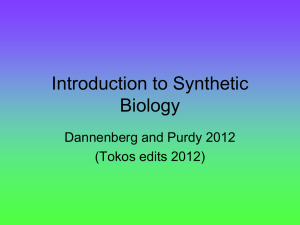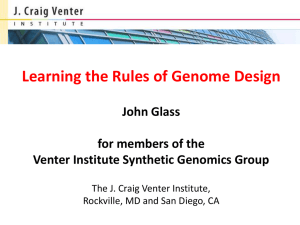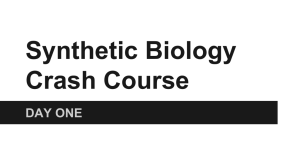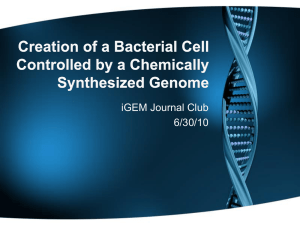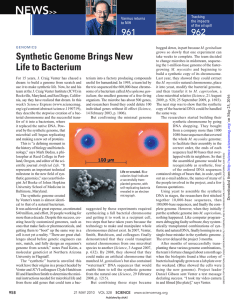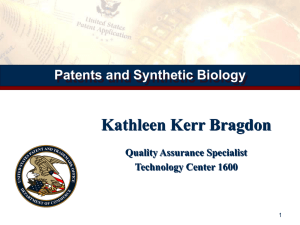Groupe a 5 ans “Spatial regulation of genomes” Institut Pasteur
advertisement
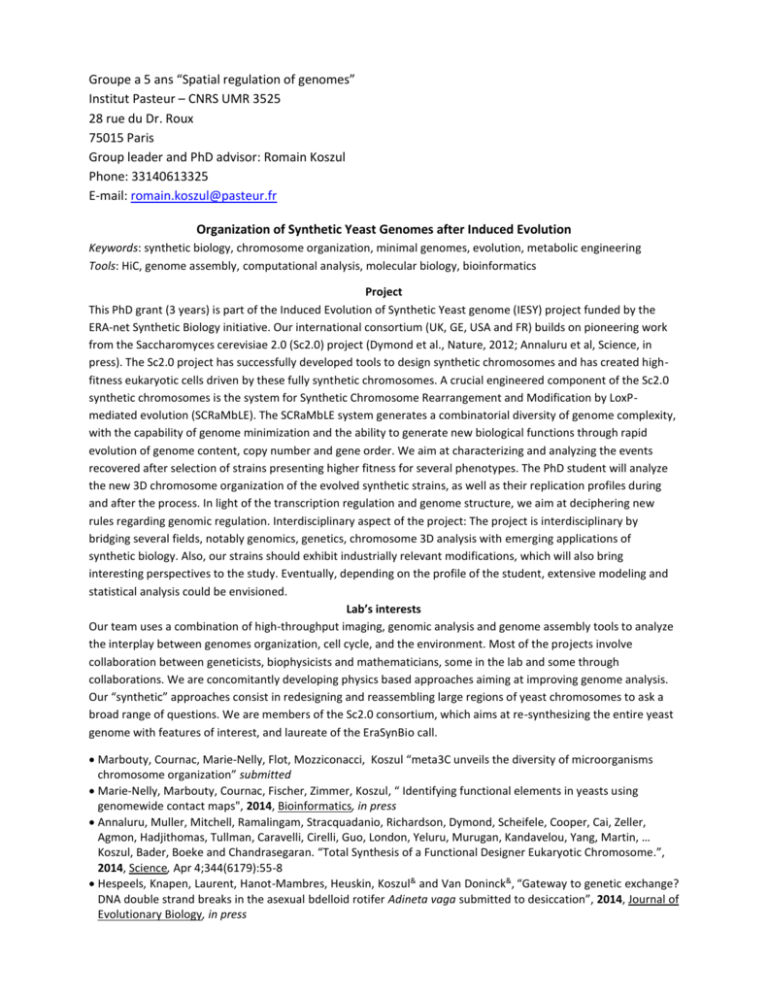
Groupe a 5 ans “Spatial regulation of genomes” Institut Pasteur – CNRS UMR 3525 28 rue du Dr. Roux 75015 Paris Group leader and PhD advisor: Romain Koszul Phone: 33140613325 E-mail: romain.koszul@pasteur.fr Organization of Synthetic Yeast Genomes after Induced Evolution Keywords: synthetic biology, chromosome organization, minimal genomes, evolution, metabolic engineering Tools: HiC, genome assembly, computational analysis, molecular biology, bioinformatics Project This PhD grant (3 years) is part of the Induced Evolution of Synthetic Yeast genome (IESY) project funded by the ERA-net Synthetic Biology initiative. Our international consortium (UK, GE, USA and FR) builds on pioneering work from the Saccharomyces cerevisiae 2.0 (Sc2.0) project (Dymond et al., Nature, 2012; Annaluru et al, Science, in press). The Sc2.0 project has successfully developed tools to design synthetic chromosomes and has created highfitness eukaryotic cells driven by these fully synthetic chromosomes. A crucial engineered component of the Sc2.0 synthetic chromosomes is the system for Synthetic Chromosome Rearrangement and Modification by LoxPmediated evolution (SCRaMbLE). The SCRaMbLE system generates a combinatorial diversity of genome complexity, with the capability of genome minimization and the ability to generate new biological functions through rapid evolution of genome content, copy number and gene order. We aim at characterizing and analyzing the events recovered after selection of strains presenting higher fitness for several phenotypes. The PhD student will analyze the new 3D chromosome organization of the evolved synthetic strains, as well as their replication profiles during and after the process. In light of the transcription regulation and genome structure, we aim at deciphering new rules regarding genomic regulation. Interdisciplinary aspect of the project: The project is interdisciplinary by bridging several fields, notably genomics, genetics, chromosome 3D analysis with emerging applications of synthetic biology. Also, our strains should exhibit industrially relevant modifications, which will also bring interesting perspectives to the study. Eventually, depending on the profile of the student, extensive modeling and statistical analysis could be envisioned. Lab’s interests Our team uses a combination of high-throughput imaging, genomic analysis and genome assembly tools to analyze the interplay between genomes organization, cell cycle, and the environment. Most of the projects involve collaboration between geneticists, biophysicists and mathematicians, some in the lab and some through collaborations. We are concomitantly developing physics based approaches aiming at improving genome analysis. Our “synthetic” approaches consist in redesigning and reassembling large regions of yeast chromosomes to ask a broad range of questions. We are members of the Sc2.0 consortium, which aims at re-synthesizing the entire yeast genome with features of interest, and laureate of the EraSynBio call. Marbouty, Cournac, Marie-Nelly, Flot, Mozziconacci, Koszul “meta3C unveils the diversity of microorganisms chromosome organization” submitted Marie-Nelly, Marbouty, Cournac, Fischer, Zimmer, Koszul, “ Identifying functional elements in yeasts using genomewide contact maps", 2014, Bioinformatics, in press Annaluru, Muller, Mitchell, Ramalingam, Stracquadanio, Richardson, Dymond, Scheifele, Cooper, Cai, Zeller, Agmon, Hadjithomas, Tullman, Caravelli, Cirelli, Guo, London, Yeluru, Murugan, Kandavelou, Yang, Martin, … Koszul, Bader, Boeke and Chandrasegaran. “Total Synthesis of a Functional Designer Eukaryotic Chromosome.”, 2014, Science, Apr 4;344(6179):55-8 Hespeels, Knapen, Laurent, Hanot-Mambres, Heuskin, Koszul& and Van Doninck&, “Gateway to genetic exchange? DNA double strand breaks in the asexual bdelloid rotifer Adineta vaga submitted to desiccation”, 2014, Journal of Evolutionary Biology, in press

